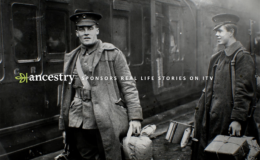
 |
Over the many years that I have taught genealogy classes at Tri-County Community College in Peachtree, I have had students who believe they are descendants of a Native American ancestry. In some cases, they have found the evidence they were looking for, but many never found that illusive native American ancestor.
Many families have passed down stories of American Indian ancestors. There are several theories as to why many Americans have similar tales of elusive native ancestors, specifically Cherokee and why folks will fiercely defend their American Indian roots even in the absence of concrete evidence. Sometimes, though, those tales do hold a grain of truth.
So, if you suspect your family has American Indian heritage, here are some research paths you can investigate.
The U.S. census records may hold a clue to your possible American Indian heritage. Look for an I or In designation in the “race” columns for an ancestor in the 1860 and later U.S. censuses. The 1860 census was the first to identify Indians living in the general population.
Check to see if you have a proven blood relative that is named on an Indian reservation census or a tribal enrollment. You can search censuses for 16 tribes in Ancestry.com collection Oklahoma and Indian Territory, Indian Censuses and Rolls, 1851-1959. Ancestry.com and Fold3 also have annual censuses taken by the Bureau of Indian Affairs.
If you have family stories and papers that tell of Native American ancestry, see if your ancestors lived in areas where they would have encountered them.
It’s important to know the history of the places you’re researching.
You should take an autosomal DNA. A genetic genealogy test could indicate you have DNA markers associated with an American Indian ancestry. However, the absence of these markers doesn’t necessarily mean that you don’t have American Indian ancestry.
If your native ancestor is 5-6 generations, or further back in your tree, it’s possible that you won’t carry any, or enough of their DNA to show on the test. A different vendor might find a small amount, so be sure to upload your results to both other DNA databases. You may also want to test relatives, such as parents, grandparents, aunts, or uncles who are generationally closer to a potential native ancestor and may carry some native DNA that you don’t.
Autosomal DNA tests may show an estimated percentage of Native American heritage you may have but cannot discern your tribal heritage. Y DNA (direct paternal for males) and mitochondrial DNA (direct maternal line for everyone) tests have a unique inheritance path and test specific ancestral lines. A resulting Native American haplogroup confirms your Native American heritage for that specific ancestral line. You may be able to infer a location, based on who you match and the locations of their ancestors, but those tests will not reveal a tribe directly.
Finally, keep in mind that DNA alone is not sufficient for tribal citizenship. Each tribe determines its own membership criteria which is usually a combination of proven ancestors on a tribal roll, and your percentage of Native ancestry based on “documented” genealogy.
Larry Van Horn is a family historian and genealogy instructor/lecturer. Send comments to him by email at familyhistorian@frontier.com; or mail to P.O. Box 297, Brasstown, NC 28902.














